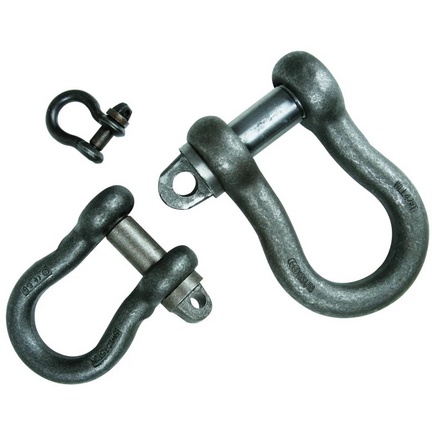Introduction:
In the realm of material handling and heavy lifting, mastering the use of lifting slings and shackles is paramount for ensuring both efficiency and safety. This comprehensive exploration aims to unravel the intricacies of these essential lifting tools, shedding light on their types, applications, and the synergies that make them indispensable in various industries.
Types of Lifting Slings:
Lifting slings are versatile tools used to hoist and transport heavy loads. Understanding the different types of slings is crucial for selecting the most suitable option based on the nature of the load and the lifting environment.
-
Nylon Slings: Known for their flexibility and strength, nylon slings are popular in various industries. They are particularly effective for delicate loads, as they are less likely to cause damage.
-
Polyester Slings: Polyester slings are prized for their low stretch and excellent load-bearing capacity. These slings are resistant to moisture and UV rays, making them ideal for outdoor applications.
-
Wire Rope Slings: Composed of steel wires woven together, wire rope slings are exceptionally durable and resistant to abrasion. They are commonly used in heavy-duty lifting operations.
-
Chain Slings: Chain slings are constructed from alloy steel chains, offering high strength and durability. They are suitable for lifting extremely heavy loads and are resistant to high temperatures.
Types of Shackles:
Shackles are crucial components in lifting operations, providing a secure link between the lifting equipment and the load. There are various types of shackles, each designed for specific applications.
-
Anchor Shackles (or Bow Shackles): Recognizable by their U-shaped design, anchor shackles are versatile and commonly used in various lifting scenarios. Their rounded shape allows for multi-directional loading.
-
Chain Shackles (or D Shackles): These shackles have a D-shaped design, with a narrower loop for connecting to chains. Chain shackles are known for their strength and are frequently used in rigging applications.
-
Screw Pin Shackles: Featuring a removable pin, screw pin shackles are easy to use and suitable for non-permanent applications. They are commonly used in situations where the load may need to be quickly secured or released.
-
Bolt-Type Shackles: Bolt-type shackles have a more secure pin design, often incorporating a nut and bolt for added stability. These shackles are preferred in situations where a more permanent connection is required.
Applications and Best Practices:
-
Load Distribution: Lifting slings distribute the load over a larger surface area, minimizing the risk of damage to the load and ensuring even weight distribution during lifting.
-
Inspecting for Wear and Tear: Regular inspections of both lifting slings and shackles are crucial for identifying any signs of wear, tear, or damage. This proactive approach helps prevent accidents and ensures the longevity of the equipment.
-
Proper Sling Configuration: Understanding the proper configuration of lifting slings is essential for safe and efficient lifting. This includes selecting the appropriate sling type, adjusting the sling angles, and securing the load correctly.
-
Load Rating Awareness: Both lifting slings and shackles come with specified load ratings. It is imperative to be aware of and adhere to these load ratings to prevent overloading, which can lead to equipment failure and accidents.
Benefits of Mastering Lifting Slings and Shackles:
-
Enhanced Safety: The primary benefit of mastering the use of lifting slings and shackles is an elevated level of safety in lifting operations. Properly selected and maintained equipment minimizes the risk of accidents and ensures the well-being of personnel.
-
Increased Efficiency: A thorough understanding of lifting slings and shackles allows for more efficient lifting operations. The right equipment for the job, combined with proper configuration, reduces downtime and enhances productivity.
-
Versatility in Applications: Mastery of lifting slings and shackles opens the door to a wide range of lifting applications. Whether it's delicate loads that require nylon slings or heavy-duty operations with chain slings, the versatility of these tools makes them suitable for diverse scenarios.
-
Cost-Effective Solutions: By selecting the most appropriate lifting slings and shackles for each application, operators can achieve cost-effective solutions. This involves minimizing unnecessary wear and tear, reducing the risk of accidents, and prolonging the lifespan of the equipment.
Conclusion:
In the world of heavy lifting, the mastery of lifting slings and shackles is not just a skill; it's a commitment to safety, efficiency, and excellence. These essential tools, when properly understood and utilized, form the backbone of successful material handling operations across various industries.
The benefits of such mastery are far-reaching, encompassing not only the immediate safety of lifting operations but also the long-term reliability and cost-effectiveness of equipment. As industries continue to evolve, the significance of lifting slings and shackles in ensuring smart and safe lifting practices is set to become even more pronounced, underlining their status as indispensable assets in the realm of material handling.


No comments yet